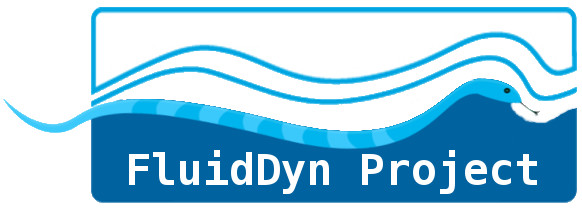



Ocean turbulence statistics interpreted as the signature of IG waves¶
"Garrett-Munk spectrum"
vertical spectra $N^2 k_z^{-3}$
temporal spectra, energy for $f < \omega < N$
Naive representation: soup - cascade of (weakly interacting) IG waves?

3d strongly stratified turbulence¶
- Kinematic decomposition: $\omega_z$, $\nabla_h u$ and shear modes
For oceanic parameters (strongly stratified, large Re):
Strongly non-linear
$\omega_z \sim \nabla_h u$

Problem standard forcing in a shell:
no well-defined $T_N(k)$
Anisotropic forcing
$\Rightarrow$ well-defined non-dimensional numbers
direction of propagation $F = \frac{\omega_l}{N}$
non-linearity $\gamma = \frac{\omega_f}{\omega_l}$
dissipation

We obtain statistically stationary flows¶
Dissipation only at small scales $\Rightarrow$ energy transfers towards small scales

It would not be the case without stratification!
Buoyancy fields at stationary state¶

Small vertical length scales for strong stratification
Warning: dissipation at large horizontal scale even for large $Re$
Horizontal and vertical spectra¶

Horizontal and vertical spectral energy budget¶
$\gamma = 1$ (strongly stratified), $n_x = 3840$


A thesis:
- open-source never so strong,
- new tools and methods allowing collective work,
- possibility of collaborations on good quality research codes.
Some packages:
fluidimage, fluidlab, fluidsim, fluidfft, transonic, ...
The code is interesting: FluidSim¶
(Ashwin Vishnu, Cyrille Bonamy, Miguel Calpe)
Open-source collaborative framework / library for writting solvers
High quality code (tests run with continuous integration, proper documentation, issue tracker)
Very user-friendly
Developer friendly: mostly in Python, highly modular (object-oriented Python)
Extensible (for example fluidsim-ocean)
Specialized in pseudo-spectral (Fourier), but not only
Very efficient
Under the hood:¶
FluidFFT: Python / C++ library for (parallel) Fourier transforms (2D and 3D)
Transonic and Pythran: "Make your Python code fly at transonic speeds!" (actually at good-C++ speed)
Conclusions¶
Work in progress
Dissipation dominated by vertical gradient $\Rightarrow$ not yet "geophysical" regime
Very interesting tools (FluidSim, FluidFFT, Transonic)
Outputs not shown here (for example spatio-temporal spectra)
Good tools and clean setup to answer these questions¶
Can we obtain (weak?) internal gravity wave turbulence?
Statistics similar as in the oceans?